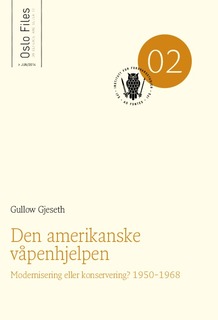Den amerikanske våpenhjelpen: Modernisering eller konservering? 1950 - 1968
Abstract
In this study, Gullow Gjeseth discusses the effect of the US arms aid programme on the Norwegian Armed Forces between 1950 and 1968. Did the provision of American weapons and new military technology result in the modernisation of the Armed Forces, or did the new resources instead help to preserve an old organisation and old concepts? The relationship between quantity and quality is a central issue in this discussion. Norway set greater store by quantity, especially for materiel destined for the Army, than did the Americans and NATO.In the decade 1950–1959, the value of the arms aid amounted to almost 4.5 billion kroner, or roughly 34 per cent of what the Norwegian Armed Forces consumed in terms of resources.The Norwegian Navy received less arms aid in the 1950s than the other branches. This changed, however, with the major fleet expansion programme of the 1960s, 50 per cent of which was funded by the US.The Air Force received the largest proportion of arms aid, and in 1954 this branch of the Armed Forces had 200 combat aircraft, and at the same time was building airports, early warning systems and other infrastructure.The arms aid programme made it possible for Norway to equip about 100,000 soldiers with American materiel. In the end, arms aid did help preserve elements of the military that Norway would otherwise have lacked the means to equip, Gjeseth concludes. Among other things, arms aid allowed the military organisation to expand so much that the nation lacked the means to fund future renewal programmes when the need arose. While arms aid contributed to a modernisation of the Armed Forces, it created at the same time an opportunity to postpone unpleasant decisions, and that in turn encouraged organisational stasis.
